Kleiner’s Korner: The Removal of the Clinton Road Motor Parkway Bridge
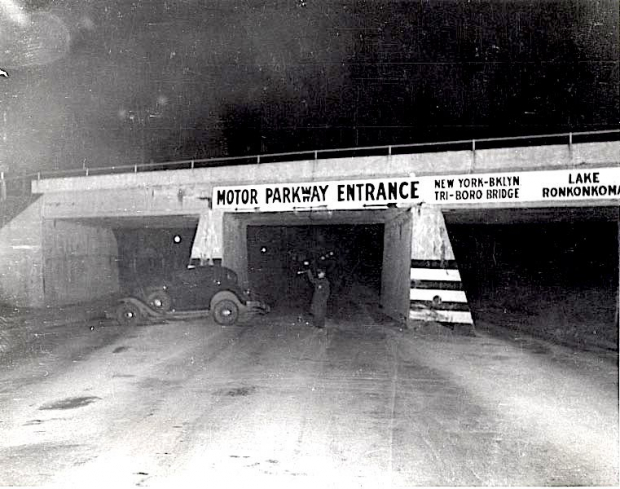
Following numerous accidents near the Clinton Road Motor Parkway Bridge in Garden City, village officials and Nassau County in 1938 agreed to dismantle the bridge and its abutments.
Art Kleiner

1919

1930s view of the bridge, looking north.
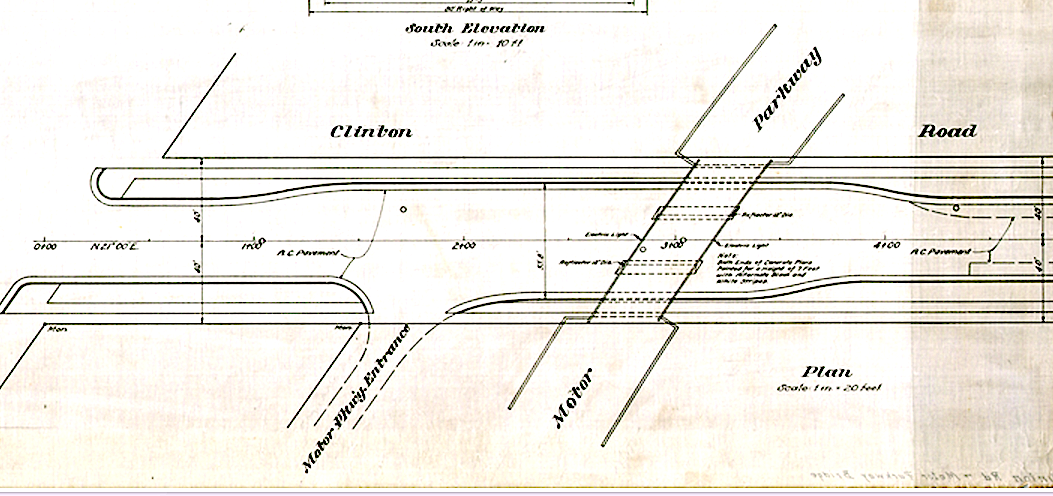
1937
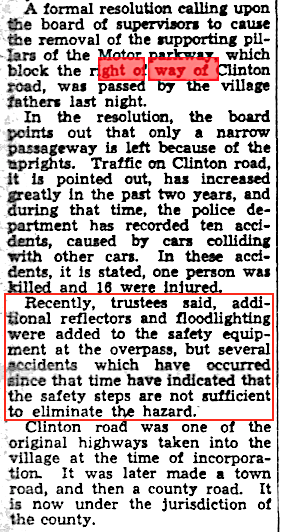
The Village of Garden City authorized a resolution in 1937 calling upon Nassau County to remove the pillars of the bridge. This was after safety features, including an electric light were added; however accidents still occurred. (The Nassau Daily Review Jan. 23, 1937)

The light is noted on this 1937 drawing of the bridge.
Numerous Accidents Occurred Near the Bridge

The Brooklyn Daily Eagle Dec. 28, 1936
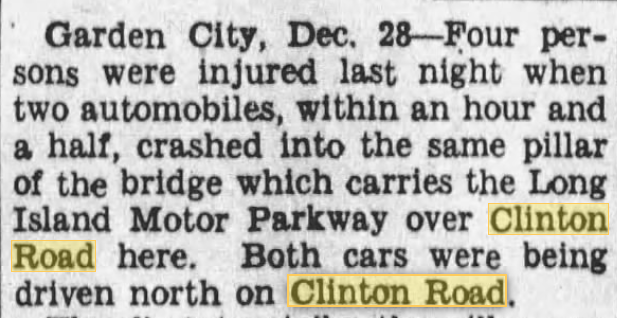
The Brooklyn Daily Eagle Dec. 28, 1936
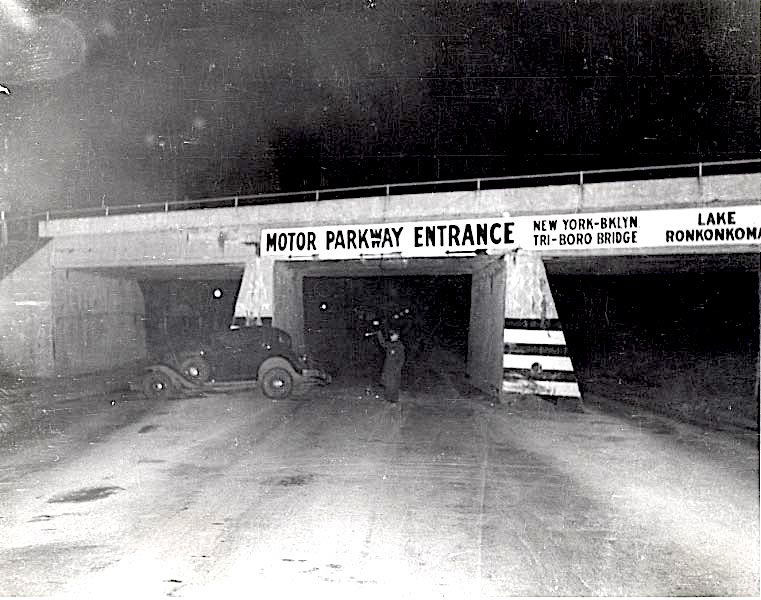
View looking south. Courtesy Ron Ridolph
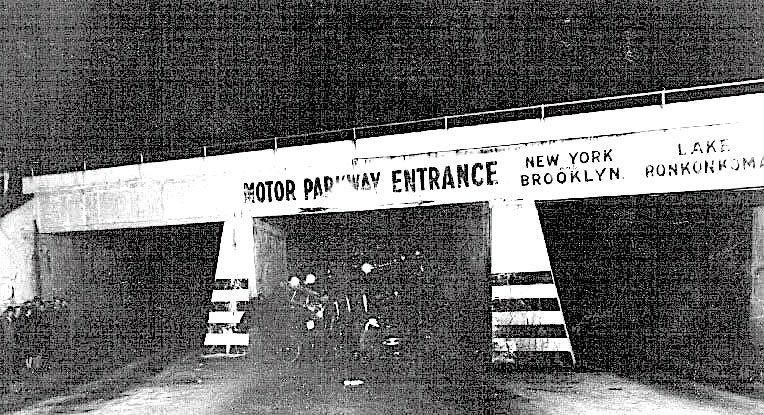
Looking north. Courtesy Ron Ridolph.
Demolish the Bridge!
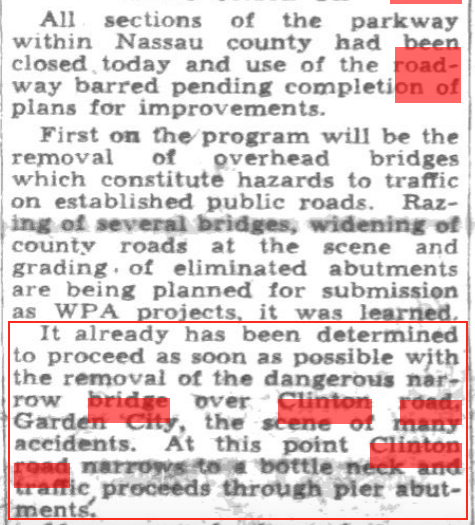
Approval is given in 1938 to demolish the bridge. (The Nassau Daily Review-Star July 2, 1938)
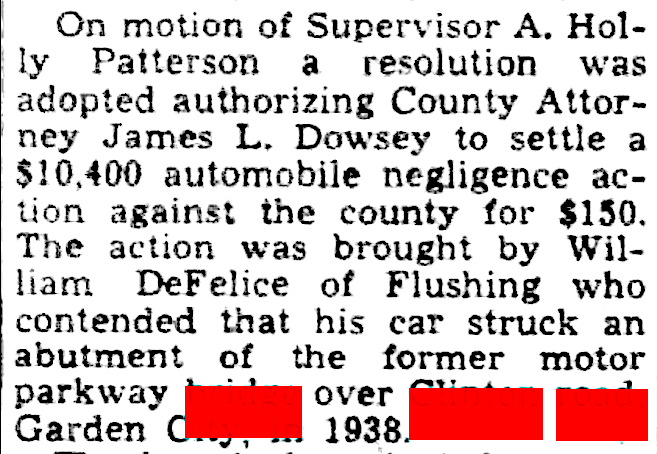
Lawsuits brought by those injured in accidents continued into 1940. (The Nassau Daily Review-Star Aug. 27, 1940)
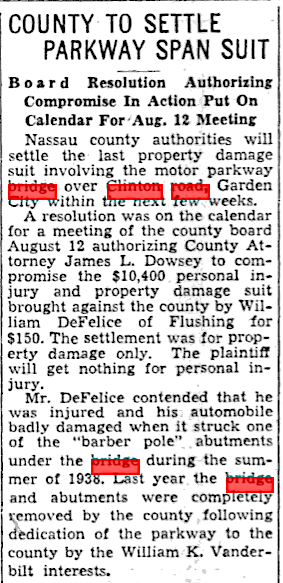
The Nassau Daily Review-Star Jul. 30, 1940
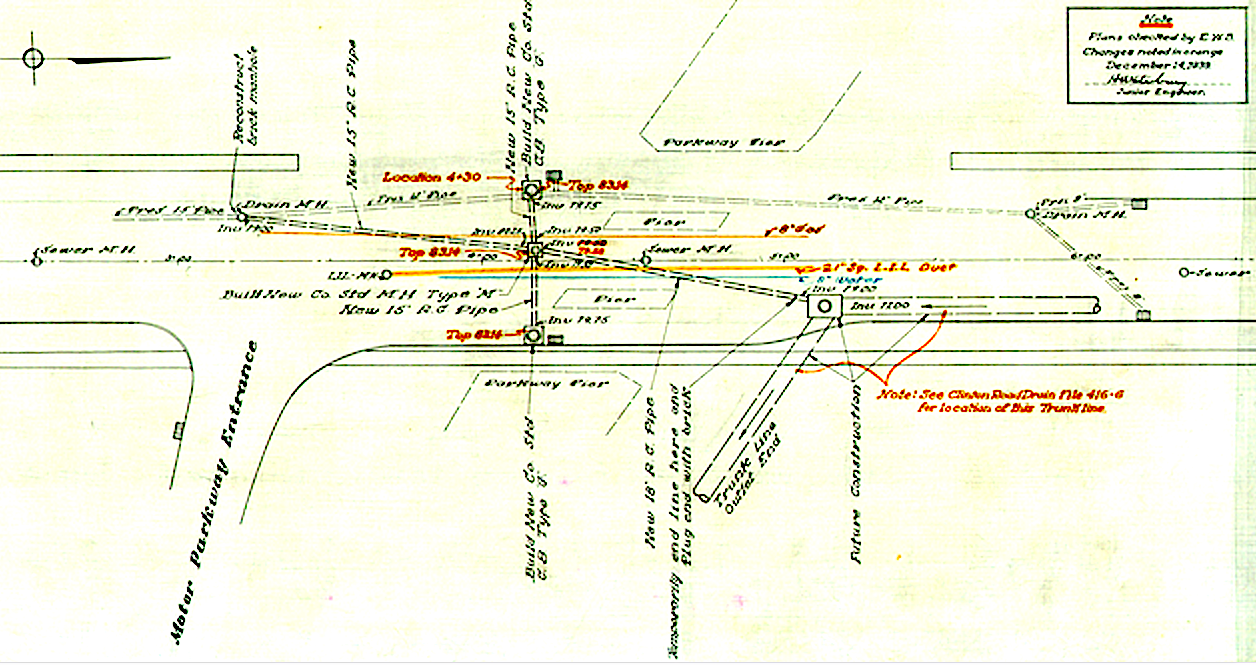
This 1939 sewer & drainage improvement plan still shows the Motor Parkway abutments ("piers") and the entrance.
Demolition Begins!
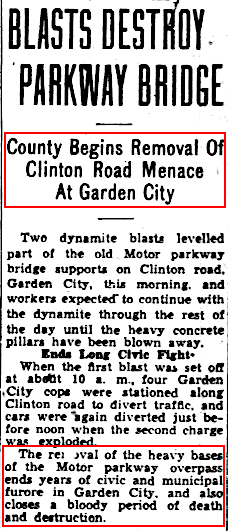
Actual demolition of the bridge abutments began in April of 1939 to close "a bloody period of death and destruction". (The Nassau Daily Review-Star Apr. 3, 1939)
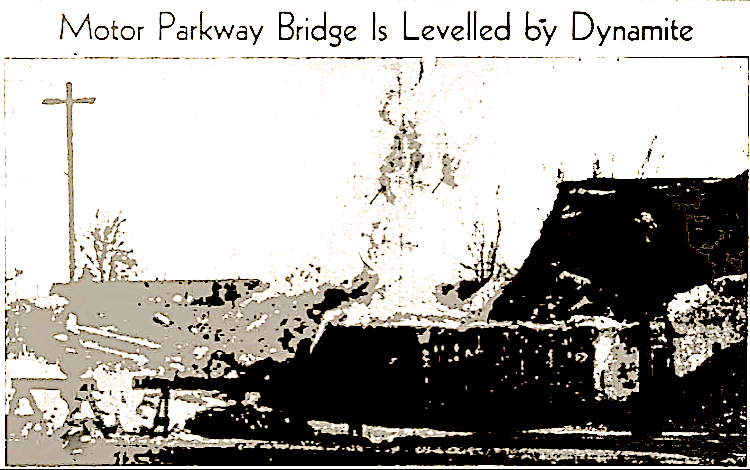
The bridge being blown up! Is it my imagination or is there a skull peering out from the ruble below from atop a construction horse? Possibly a ghost of one of the victims of an earlier accident? (The Nassau Daily Review-Star Apr. 4, 1939)

Caption of the above photo.


Comments
Great historic events of the Clinton Rd bridge Art, thank you for the articles. Sad to see it removed. There was no other way to allow free flowing traffic on Clinton Rd below, similar to the New Hyde Park Rd parkway bridge. As I understand, both bridges were hazards, with increasing volume of traffic at the time.
A nice report of the events Art. I suppose the technology at the time of construction required columns to support the bridge if it was longer than a certain length. Would that be correct? They were clearly a hazard. An idea for a future story would be the chronological details of when all of the LIMP bridges were dismantled. you may have done that but I missed it.
Aside from wondering why it was not built with only one support in the center instead of two, it is surprising that in almost twenty years no one thought to block the center path where the accidents from use by opposing traffic probably occurred and make the traffic only use the outer paths. Was any other bridge on the parkway built this way? Why couldn’t a steel span have been used such as the one that crossed the LIRR to the north? That it was on a curve only meant to make the span a bit wider for the roadway.
Bill, I’m aware of only one other three span Parkway bridge, the one built over Westbury Ave. in Mineola. Parkway bridges with more than one span were built to accommodate trolley lines. Never been able to figure out why three openings of these two bridges. Clinton Ave. was a dirt road when the Parkway bridged it. When it was paved only the center span received that attention. Guess what opening motorists preferred. The odd thing about this bridge was the center span was only sixteen feet wide, the exact width of the Parkway roadway…. Coincidence ? The bridges built earlier east of this one were 26 feet wide to accommodate the 22 foot wide Parkway roadway, a 2 foot wide clearance on either side. Steel trestle bridges were never the first choice of the Parkway because of the expense.